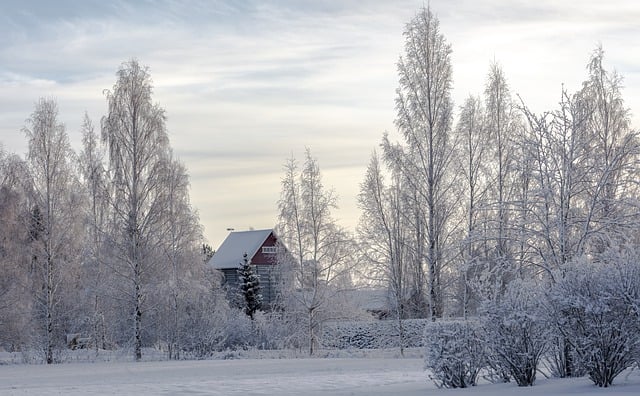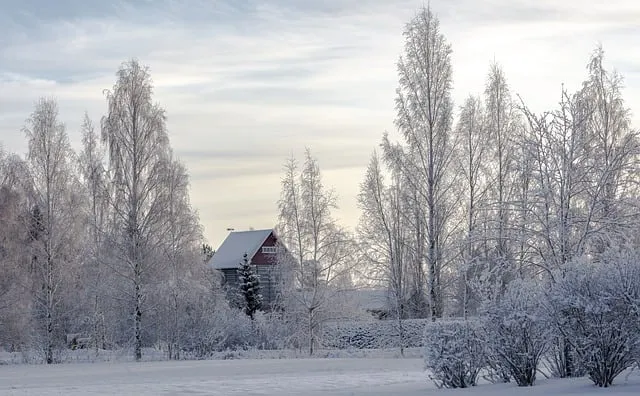What’s the Impact of Seasonal Changes on Dryer Energy Consumption?

During the warmer months, when the air is dry and the sun is shining, your dryer often gets a bit of a break. That’s because the increased ambient temperature helps clothes dry faster. When the air is warmer, your dryer doesn’t need to work as hard to heat up, which means it uses less energy. It’s like how a cold drink melts faster in the sun than in the shade; warmer air helps your dryer “cook” your clothes faster and more efficiently.
But come winter, it’s a different story. The colder, damp air outside can make your dryer work overtime. With the lower temperatures, the dryer needs to heat up more to get your clothes dry. Imagine your dryer as a hardworking chef in a chilly kitchen—it needs more energy to keep the oven at the right temperature. Additionally, the air inside is often more humid in winter, which means your dryer has to fight against the moisture in the air, using even more energy to get your clothes bone-dry.
Also, consider the impact of indoor humidity. In the winter, if you’re running a humidifier or if there’s excess moisture from cooking or showers, this extra humidity can make your dryer work harder. It’s a bit like trying to dry off with a wet towel—more effort is needed when there’s more moisture around.
So, as the seasons change, keep an eye on your dryer’s energy usage. Adjusting when and how often you use it based on the weather can make a surprising difference in your energy bills.
Winter vs. Summer: How Seasonal Shifts Affect Your Dryer’s Energy Bill
In winter, the cold air outside can make it harder for your dryer to do its job efficiently. When you’re drying clothes in the winter, the dryer has to work extra hard to heat the air inside the drum and keep it warm enough to evaporate the moisture from your laundry. This means it’s using more energy than during the summer, when the warmer air outside can help your dryer perform better. Think of it like trying to make soup on a cold stove versus a hot one—it’s just more effort and energy to get the same result.
Moreover, during winter, homes are often less ventilated to conserve heat, which can lead to higher humidity levels inside. Your dryer needs to cope with this added moisture, which again requires more energy to ensure your clothes come out dry and fresh.

In contrast, summer brings drier air, making it easier for your dryer to expel moisture. The warm, dry air helps speed up the drying process, thus using less energy. It’s like having a cool breeze on a hot day—everything feels easier and more efficient.
So, as the seasons change, so does your dryer’s performance and energy consumption. By understanding these shifts, you can better manage your energy usage and maybe even find ways to save on those pesky bills.
From Cold to Hot: The Surprising Ways Seasonal Changes Impact Dryer Efficiency
Imagine your dryer as a meticulous chef, crafting the perfect dish. In the summer, it’s like cooking on high heat: the warmth in the air helps clothes dry faster, and your dryer gets a little break. But come winter, it’s like cooking with the oven on low—it has to work harder. Cold air can slow down the drying process, making your dryer run longer to reach that perfect dryness level.
Humidity is another sneaky culprit. During humid seasons, like late spring or summer, the air is packed with moisture. Your dryer has to battle this extra moisture, which can make it work overtime. Think of it as trying to cook a stew with extra water in the pot—it takes longer to get it just right.
But let’s not forget the role of air flow. In the colder months, air tends to be less dry and less conducive for the dryer’s exhaust system. This means that the hot air being expelled might not flow as freely, reducing your dryer’s efficiency. It’s like trying to push a boat through thick mud instead of smooth water.
In essence, the dance between seasonal changes and dryer performance is all about how environmental factors affect your machine’s efficiency. With colder temperatures and higher humidity, your dryer has to adapt, sometimes working harder to keep up with its usual routine. So next time your dryer seems sluggish, it might just be the weather playing a part in its performance.
Seasonal Switch: How Temperature Fluctuations Can Boost or Cut Your Dryer’s Energy Use
Imagine your dryer as a hardworking athlete. During the summer, the heat is already on your side. When the weather is warm, your dryer doesn’t have to work as hard to get your clothes dry. The hot air in your home helps the dryer’s heating element run more efficiently. It’s like giving your athlete a break by already being warmed up!
But then comes winter, and it’s a different story. When the temperature drops, your dryer has to work against the chill. The colder air means the heating element has to exert extra effort to reach the same drying temperatures, leading to increased energy use. It’s like making your athlete train in the cold; they need more energy to stay warm and perform.
Spring and fall present their own unique challenges. In these transitional seasons, the temperature might fluctuate widely throughout the day. This can confuse your dryer, as it has to constantly adjust to changing conditions, potentially leading to inefficiencies.
On top of that, seasonal humidity can play a role too. During humid summer months, the air is saturated with moisture, which makes drying take longer. Your dryer has to work harder to combat this extra moisture, using more energy in the process.
Energy Costs on the Line: What Seasonal Changes Mean for Your Dryer’s Performance
Picture this: in winter, your dryer works harder to overcome the chill in your laundry room. Cold air makes the drying process less efficient, meaning your dryer has to use more energy to get your clothes from damp to dry. It’s like trying to warm up a cold house with a small heater—you need to crank it up, and that costs more.
In summer, the story shifts. High temperatures and humidity can turn your laundry room into a mini sauna. Your dryer, already struggling with the extra heat, ends up running longer to get the job done. So, just when you’re enjoying the sunshine, your energy bill might be creeping up because your dryer is working overtime to deal with the heat and moisture.
Spring and fall bring a different set of challenges. While the moderate temperatures might seem like a break, fluctuating humidity levels can mess with your dryer’s efficiency. Think of it as your dryer trying to dance in a constantly changing environment—one minute it’s too damp, the next it’s too dry. This inconsistency can make it work harder, leading to higher energy use.
In short, seasonal changes put your dryer to the test, impacting how much energy it uses. Keeping an eye on these shifts and adjusting your laundry habits can help you manage those pesky energy bills. It’s all about making sure your dryer stays efficient through every season’s quirks.
Heat Waves and Cold Spells: How Different Seasons Influence Dryer Energy Consumption
During a sweltering heat wave, your dryer isn’t exactly taking a vacation. In fact, the high temperatures can actually cause your dryer to use more energy. Why? When it’s scorching outside, your dryer’s cooling system has to work overtime to keep everything running smoothly. Think of it as your dryer sweating through a marathon—it needs extra energy to stay cool and efficient.
On the flip side, cold spells present a different set of challenges. When temperatures drop, your dryer has to work harder to reach and maintain the ideal drying temperature. Imagine your dryer as a chef trying to cook a perfect meal in a chilly kitchen; it needs more energy to heat up and keep the heat steady. This added effort translates to increased energy consumption.
But that’s not all. Cold weather can also lead to moisture buildup in the dryer vents and ducts, making it harder for your dryer to expel moist air efficiently. It’s like trying to run with a heavy backpack—every step takes more effort. Consequently, your dryer has to work even harder, consuming more energy in the process.
So, whether it’s battling the heat of summer or the chill of winter, your dryer’s energy consumption fluctuates with the seasons. Being aware of these factors can help you manage your energy use and potentially save on your utility bills.
Dryer Drama: Why Your Appliance’s Energy Use Changes with the Seasons
Imagine your dryer is like a car engine. Just as a car’s performance changes with the weather—think winter’s cold or summer’s heat—your dryer’s efficiency is also affected by temperature and humidity. In colder months, the air is dry and less humid, which means your dryer has to work harder to generate the heat needed for drying clothes. This extra effort translates into higher energy consumption.
On the flip side, during warmer months, the increased humidity can cause your dryer to run longer. The machine has to spend more energy removing moisture from the air, which it does by running extended cycles. It’s a bit like trying to dry off after a swim—there’s more moisture to deal with, so it takes longer.
Another factor is how often you use your dryer. In the winter, you might do more laundry due to heavier clothing, blankets, and holiday gatherings, driving up energy use. Conversely, summer might see a drop in laundry loads as lighter clothing dries faster or you line-dry items outside.
Understanding these seasonal quirks can help you manage your dryer’s energy use better. For instance, using it during off-peak hours or ensuring proper maintenance can mitigate some of these changes. It’s all about keeping your appliance in balance, no matter the season.
Seasonal Energy Secrets: How to Optimize Dryer Efficiency Year-Round
First off, let’s talk about airflow. In summer, when the weather is warmer, your dryer can be a bit of a diva, needing more energy to dry clothes. To keep it cool and efficient, make sure the vent hose isn’t kinked or clogged. Think of it like a straw—if it’s bent or blocked, it’s hard to sip through it, right? Clean your lint filter regularly to maintain smooth airflow.
Winter, on the other hand, can be a bit of a tricky season. Cold air can make your dryer work overtime. But here’s a neat trick: try using the dryer in the morning when it’s cooler. The cooler air actually helps in the drying process because it’s denser, which can aid in evaporating moisture from your clothes more efficiently. Also, consider air drying your laundry indoors near a heater—this not only saves dryer energy but can help warm up your space a bit too!
Spring and fall offer a sweet spot for dryer efficiency. The moderate temperatures are perfect for balancing your dryer’s workload. Use this time to perform a quick maintenance check: clean out the vent, check for any potential leaks, and ensure everything’s in tip-top shape.
Every season has its quirks, but with these simple tweaks, your dryer can stay in peak condition, no matter what the weather throws at you.

